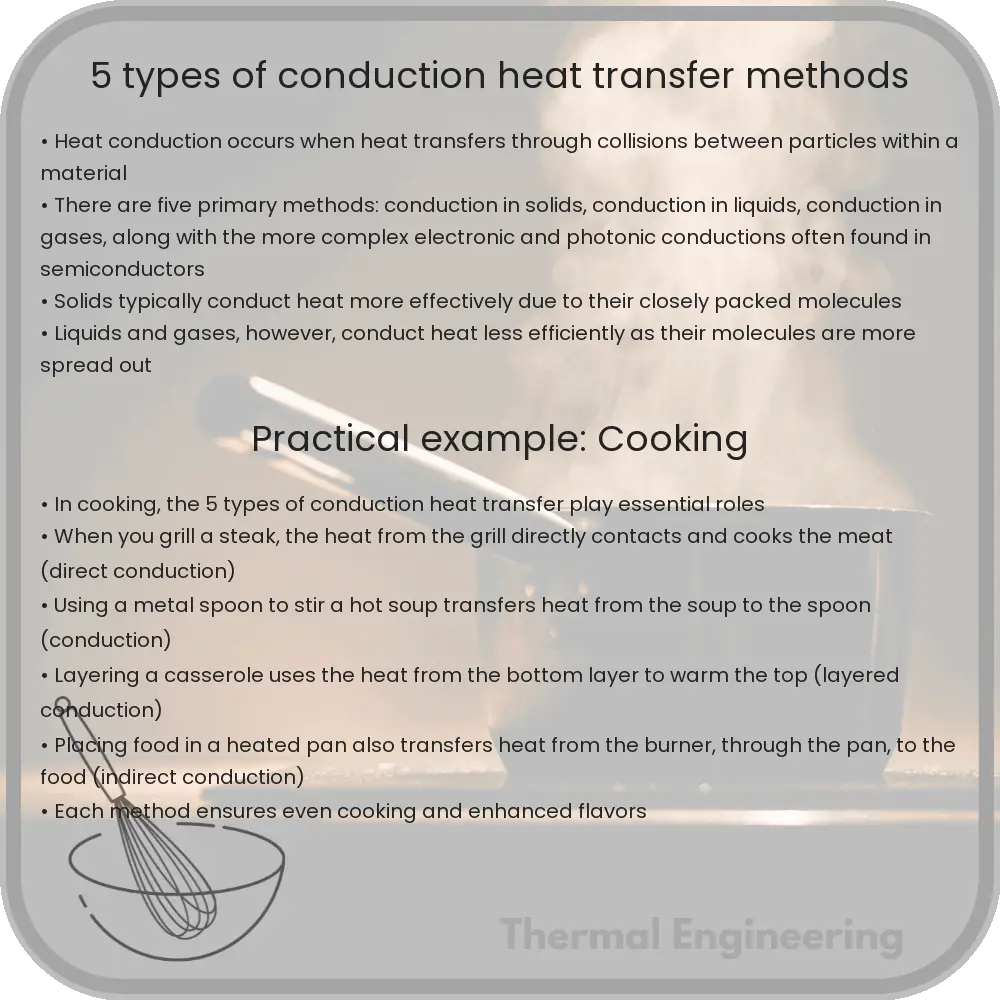Learn about the five types of conduction heat transfer, including Fourier’s Law, steady state, transient, linear, and radial conduction.

Understanding the 5 Types of Conduction Heat Transfer
Heat transfer by conduction occurs when thermal energy transfers from one object to another through direct contact. This fundamental concept is crucial in disciplines like engineering and environmental science. In this article, we’ll explore the five primary methods of conduction heat transfer, offering insights into how each process works and where it typically occurs.
1. Fourier’s Law of Heat Conduction
Named after the French physicist Jean Baptiste Joseph Fourier, this law forms the basis for understanding thermal conduction. Fourier’s law states that the rate at which heat transfers through a material is proportional to the negative gradient in the temperature and to the area through which the heat is flowing. The mathematical representation is:
q = -k * A * (dT/dx)
- q is the heat transfer rate (in watts, W)
- k is the thermal conductivity of the material (in watts per meter Kelvin, W/m*K)
- A is the cross-sectional area perpendicular to the heat flow (in square meters, m2)
- dT/dx is the temperature gradient in the direction of the heat flow (in Kelvin per meter, K/m)
2. Steady State Conduction
Steady state conduction refers to a process in which the temperature field in the conducting body does not change over time. In practical terms, it means that the heat flow into any region of the material is exactly balanced by the heat flow out. This scenario often occurs in building insulation and thermal engineering designs where maintaining consistent temperature profiles is crucial.
3. Transient Conduction
Unlike steady state conduction, transient conduction occurs when the temperature field within an object changes over time. This type of conduction is significant during the heating or cooling phase of objects, and its analysis typically requires solving the heat equation using time-dependent boundary conditions and initial conditions.
4. Linear Conduction
Linear conduction refers to heat transfer through a homogeneous rod or slab in which the thermal conductivity is independent of the temperature. The distance over which the heat flow occurs significantly affects the efficiency and speed of the heat transfer, making it a critical factor in applications such as heat sinks and thermal barriers.
5. Radial Conduction
Radial conduction is a type of heat flow that occurs outward in a radial direction from a central axis. This method is particularly important in cylindrical and spherical objects like pipelines, rods, or tanks used in chemical and power plants. Managing radial conduction is essential for ensuring the efficiency and safety of such systems.
Understanding these various methods of conductive heat transfer is pivotal for engineers and designers when they choose materials, design objects, and build systems that handle high temperatures or require efficient thermal management. Each method provides a framework to address different industrial challenges and innovate in heat-sensitive applications.